15 Jan The gut’s barrier function in production animals
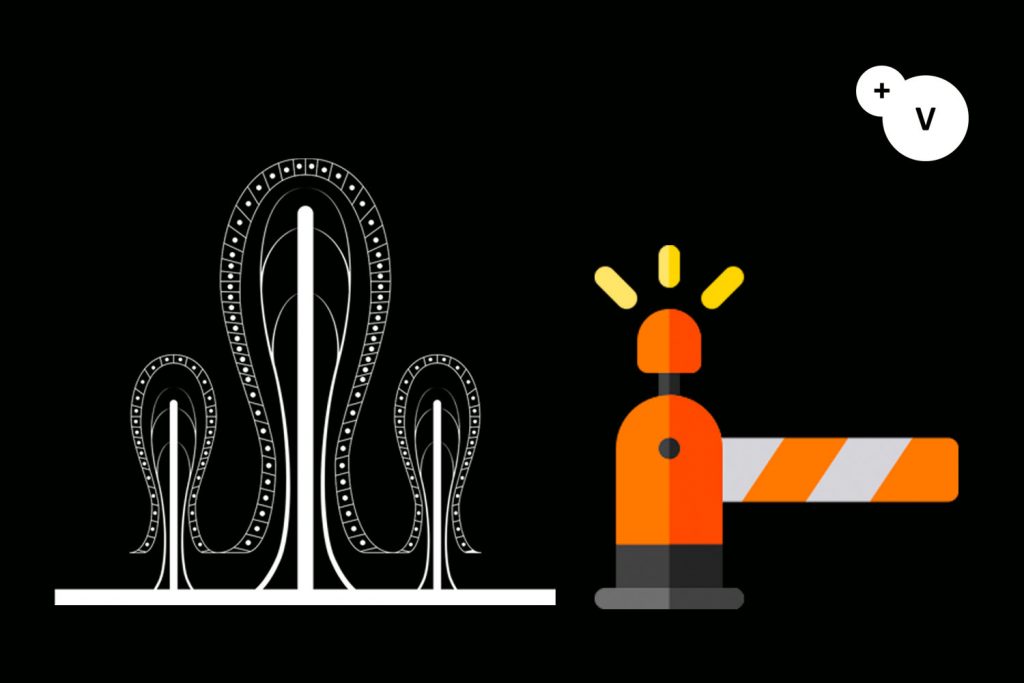
The surface of the gastrointestinal tract is covered by epithelial cells. These cells must prevent the absorption of toxic substances and pathogenic microorganisms into blood, while at the same time they must ensure the absorption of nutrients. To achieve this target, the gut has developed a “barrier function”, constituted by a semi-permeable barrier that allows the pass of certain substances and repels others.
The malfunction of the barrier function, also called “leaky gut”, allows pathogens, toxic substances and pro-inflammatory compounds into the body and causes diseases as bacterial chondronecrosis with osteomyelitis or colibacillosis in poultry and postpartum dysgalactia syndrome in sows.
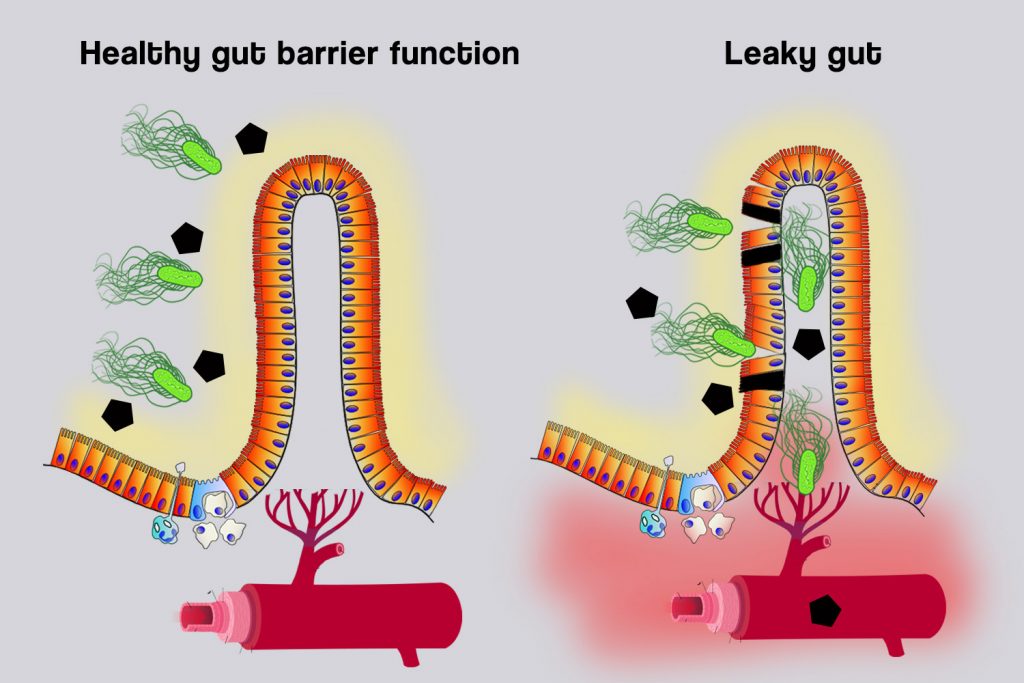
The gut barrier function is constituted of extracellular and cellular elements.
Extracellular elements of the barrier function
- The first line of defense is the low pH found in the stomach/gizzard that destroys unspecifically many pathogenic microorganisms and toxic substances.
- The enzymes secreted by the stomach/gizzard, pancreas and bile are toxic on many microorganisms, degrading their cell wall.
- Inside the layer of mucin that covers the epithelium there are antimicrobial peptides and immunoglobulins that prevent the adhesion of the potential pathogens to the intestinal wall and are able to eliminate many bacteria, yeast, fungi and virus.
- The peristaltic movements, that move the intestinal content until its evacuation by defecation, reduce the time that animal is exposed to the potential pathogens and toxins.
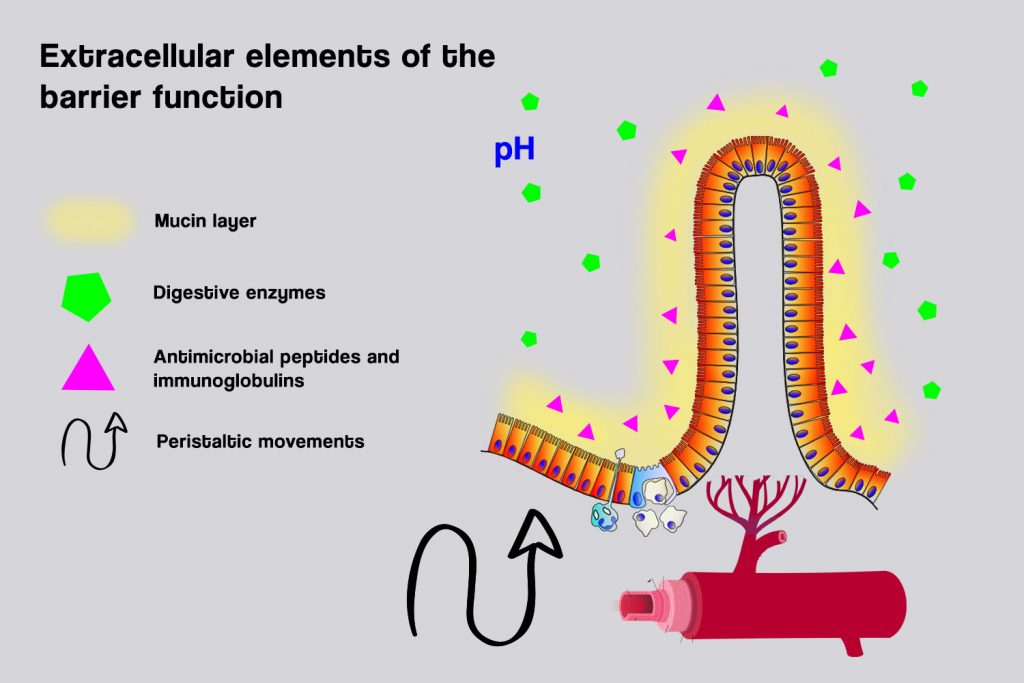
Cellular elements of the barrier function
- The gut flora, that limits the colonization by pathogens by competing with them for the available nutrients, influencing the pH and producing antimicrobial substances.
- The gut-associated lymphoid tissue (GALT), which is responsible of the immune function in the gastrointestinal tract.
- The cells in the intestinal epithelium, constituted by a monolayer of cells. Around 80% of these cells are enterocytes that perform immune functions sometimes, secreting immune factors. The cells are connected among themselves and to the basal membrane through junctions made of proteins. There are three types of junctions: tight junctions, communicating junctions and anchoring junctions. Among them, the tight junctions are the most relevant for the barrier function.
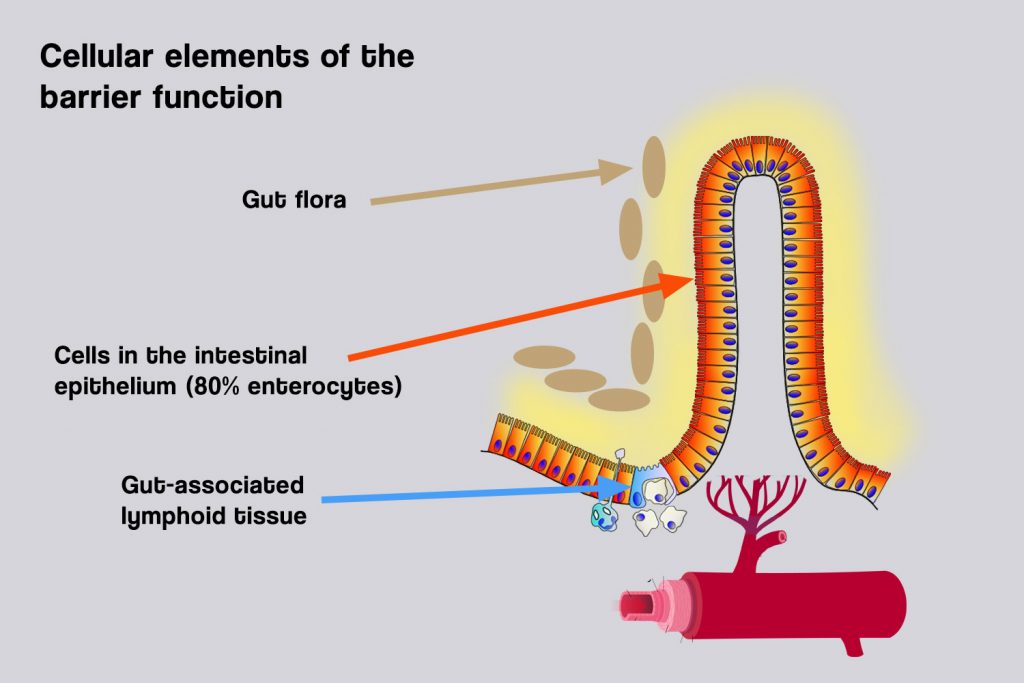
Tight junctions
The intestinal permeability is defined as the capacity of the epithelium to be penetrated by certain substances. The movement of water, ions and nutrients through the epithelium can be carried out through active transport (specific transporters) or passive transport (diffusion). The active transport happens in the enterocytes, while passive transport happens mainly (85%) through the spaces between the epithelial cells.
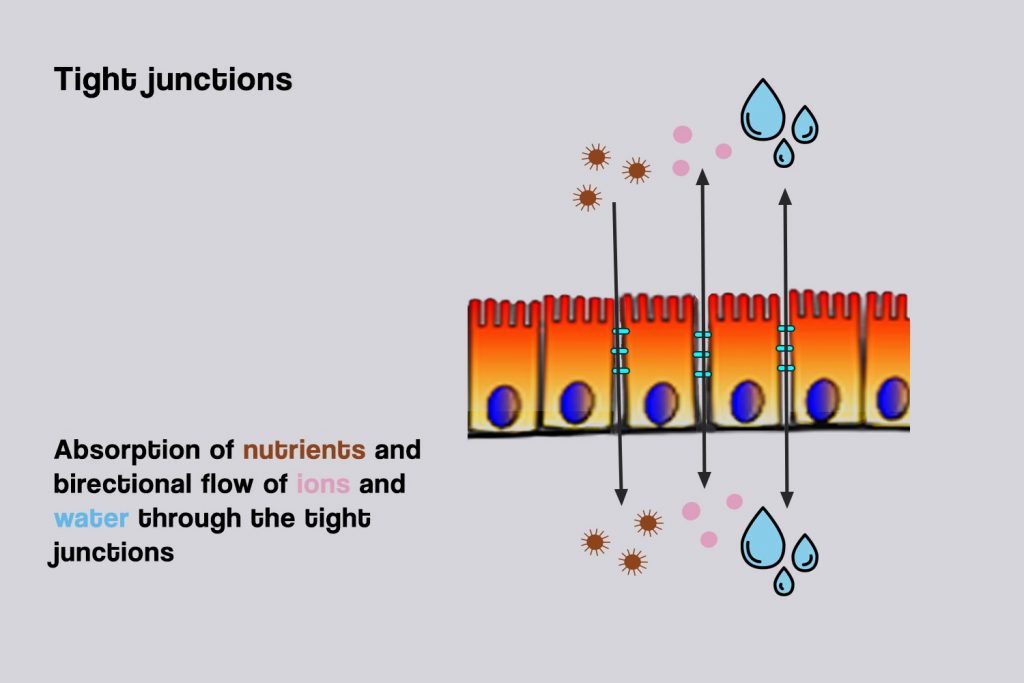
Tight junctions are complexes of proteins located between the epithelial cells. They hold the epithelial cells together while they also play a key role in the gut barrier function: tight junctions regulate the permeability of the spaces between the cells, allowing the absorption certain nutrients, such as glucose, the flux of water and ions from the lumen of the intestine to the blood and in the opposite direction, while at the same time they prevent the penetration of toxins and microorganisms.
In certain stressful conditions, such as heat stress in poultry or weaning in pigs, or conditions of inflammation in the intestinal epithelium, the functioning of the tight junctions is altered and pathogenic microorganisms are allowed into the blood stream, starting the leaky gut syndrome.
Control and failure of the gut’s barrier function
The control of the gut barrier function is the result of the interaction between the gut flora, the epithelial cells, the local immune system and the Central Nervous System.
Whenever there is an imbalance of the extracellular and cellular elements that constitute the gut barrier function, the intestinal permeability increases and, if it progresses, the leaky gut syndrome starts. The failure of the local immune system and the presence of inflammation are the main risk factors.
Feed additives that reinforce the barrier function
The following feed additives can be used to reinforce or restore the gut barrier function:
- Acidifiers to maintain a low pH in gizzard/stomach (DigestoCid©).
- Phytogenics that promote the secretion of digestive enzymes or the supplementation of exogenous enzymes.
- Probiotics and prebiotics that keep a heathy gut flora.
- Short chain fatty acids and phytogenics that upregulate the expression of tight junctions.
- Antiinflammatory and antioxidant additives, such as certain phytogenics, that prevent the increase of intestinal permeability and promote the healing of the tissues.
- Phytogenics, prebiotics, probiotics and short chain fatty acids that boost the activity of the immune function in the gut and the secretion of antimicrobial peptides and immunoglobulins.
We at PlusVet Animal Health have a comprehensive vision of the functioning of the digestive system in farm animals. That’s why we have designed our products to target the different factors that ensure gut health, including a combination of ingredients that optimize the different physiological and metabolic functions of the digestive system. This holistic design makes our products radically different from competitors.
Products such as GrowthPlus©, ReproPlus© and PigletPlus© reinforce and restore the gut’s barrier function, by including ingredients like prebiotics, short chain fatty acids and phytogenics that promote the secretion of digestive enzymes, upregulate the expression of tight junctions and have anti-inflammatory, antioxidant and immune boosting properties.

Certain health statements may not be applicable in your region.

